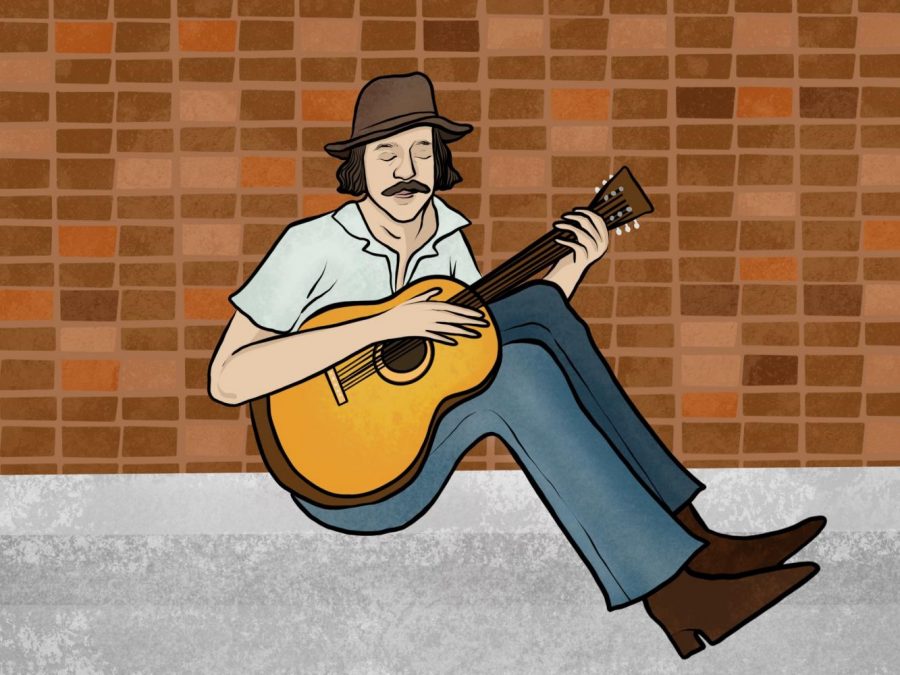What good does it do to pin two influential artists against each other? Jeff Slate’s April 2 piece for NBC Think argued that Paul Simon would end up a ‘historical footnote’ to Bob Dylan. Although Dylan is an artist worthy of all the admiration he receives, Paul Simon should not be overlooked. Simon’s musical contributions have a long-lasting cultural impact and selling his catalog to Sony is the best way to solidify his place in musical history.
Artists sell their catalogs because they want their music to be integrated into films as it was done in the past — it’s a way to solidify their legacies. Since Simon made a deal with Sony Music Publishing, Sony will now hold the rights to his complete collection, which allows them to handle licensing deals in advertisements, streaming services, social media platforms, television and films.
Simon is not the only artist who has done this. Bob Dylan sold his entire catalog to Universal Music Publishing Group in December. Others also sold their rights, either fully or partially, including Neil Young, David Crosby, Stevie Nicks and younger artists, such as Mark Ronson and OneRepublic’s Ryan Tedder.
While we cannot predict who or what will endure the test of time, the selling of an artist’s catalog proves that they are deliberate in who has access to their music. Artists can plan their estates and rights holders ahead of time, avoiding the ever-so-common posthumous legal battle. Simon’s selling of his catalog is seen as an act of responsibility, where he knows the cultural and musical weight of his work. He wants to preserve their legacy and he wants to make the decision himself. He probably wants the money too.
Since the act of selling catalogues is an increasing trend, artist contributions are being monetized in large fixed amounts. While the price of Simon’s deal has not been disclosed, it is easy to compare and estimate the cost of an artist’s deal and their legacies. However, that action contributes to a larger, toxic problem consistent in the music industry: pitting successful musicians against each other, rather than celebrating their differences and artistry.
Since they were part of the 1960s folk movement in New York City and found commercial success in later years, Dylan and Simon are depicted as rivals. While they’ve both been highly regarded for their songwriting capabilities, the similarities stop there. Even Simon noted the difference between himself and Dylan.
In a 2012 Rolling Stone interview, Simon explained the main difference between their voices. While Dylan’s voice can take on multiple meanings, Simon’s can only sound sincere.
Even though Simon’s voice and lyrical quality remain consistent, his sound and genre changes with each track. Simon flows between musical styles effortlessly, pulling influence from a variety of genres in a single album. Simon & Garfunkel’s “Bridge Over Troubled Water” might be most representative of the wide range of genres that Simon would integrate into his solo work: gospel (“Bridge Over Troubled Water”), traditional Andean music (“El Cóndor Pasa (If I Could)”) and even bossa nova (“So Long, Frank Lloyd Wright”).
In Simon’s 1972 self-titled album, he incorporated reggae (“Mother and Child Reunion”), Brazilian percussion (“Me and Julio Down By the Schoolyard”) and returned to his fascination with Andean music in “Duncan.” Simon’s iconic “Graceland” album included sounds of zydeco, Tex-Mex and a variety of South African music, both traditional and contemporary. He exposed listeners to a variety of diverse sounds, many of which were previously unfamiliar to the mainstream ear.
As a member of Simon and Garfunkel, Simon’s work during the rise of folk rock both defined and pushed the boundaries of the genre. Folk music was largely associated with political and social commentary, and was often made into protest music.
Simon’s songwriting defied the folk standard of the time, embracing cultural commentary in tracks like “America” but doing so though subtle, witty narratives and observations. While this may sound similar to Bob Dylan’s work, the other folk artist of the time, Simon’s lyrics are intimate and approachable. One is not worse than the other, they’re just different.
Simon’s critical praise and awards alone prove his unwavering historical influence. Paul Simon won sixteen Grammy Awards during both his Simon & Garfunkel and solo periods, including a Lifetime Achievement Award. Time Magazine ranked him as one of the “100 People Who Shaped the World” in 2006, and in 2007 received the first annual Library of Congress Gershwin Prize for Popular Song. Simon made the list of Rolling Stone’s “100 Greatest Guitarists” list and eighth on their “Greatest Songwriters of All Time” list, where they write: “If Paul Simon’s career had ended with the breakup of Simon & Garfunkel in 1970, he would still have produced some of the most beloved songs ever.”
Paul Simon has already seen the longevity and influence of his work in film, one of the many rights that Sony Music Publishing now has. Simon & Garfunkel’s music was used for the entire soundtrack of “The Graduate”, apart from a few instrumentals by Dave Grusin. Their music underscored the film’s themes of rebellion, alienation and love, with their countercultural image and Simon’s poetic, collegiate-like songwriting.
Without Simon & Garfunkel’s music, “The Graduate” would not be the movie that it is. In the opening scenes of “Almost Famous,” a film that chronicles the story of a young boy named William Miller, played by Patrick Fugit, aspiring to be a rock journalist, his older sister is caught with Simon & Garfunkel’s “Bookends” album after their mother bans them from listening to rock music. With an enlightened gaze, William toys with the album that sparked his fascination with rock music. William’s reaction embodies the same sense of enlightenment that washes everyone the first time they become enamored with Simon’s sound.
Rock musician and member of Bruce Springsteen’s E Street Band Steven Van Zandt tweeted that Slate’s view of history was inaccurate with regard to Simon. He placed Simon among names like John Lennon, Paul McCartney, Mick Jagger, Keith Richards and Bob Dylan, stating that they all were the Beethovens, Mozarts and Tchaikovskys of the decade. John Mayer posted a screenshot of Slate’s piece with the caption, “Well, I’m one of Paul Simon’s descendants, and for as long as I live I will make sure he’s never forgotten.”
Maybe Slate’s article was a blessing in disguise. While the piece displayed the danger of thinking one artist is the end-all-be-all, the somewhat niche virality of the story was broad enough to remind rock listeners of Simon’s legacy and introduce new listeners to his work. Whether Paul Simon will be remembered in 200 years is unknown, but thanks to Sony and Slate, at least he’ll be remembered for the next few.
Email Ana Cubas at [email protected].


























































































































































Ryan Anderson • Apr 21, 2021 at 11:48 pm
paul simon is great but is completely dwarfed by dylan. dylan makes paul simon look like a grammar school song writer. its not simons fault.
ANSELMO TADEU FERREIRA • Apr 21, 2021 at 4:38 pm
Although Dylan being number one in my opinion, I totally agreed with the author. Paul Simon is great,